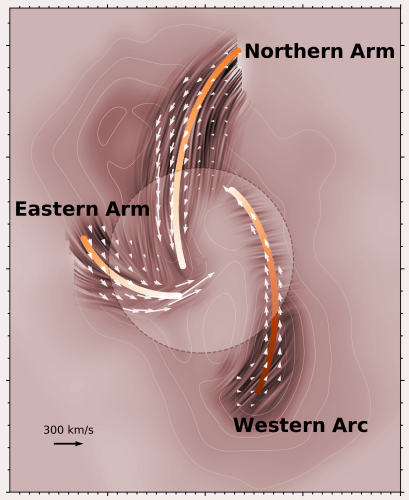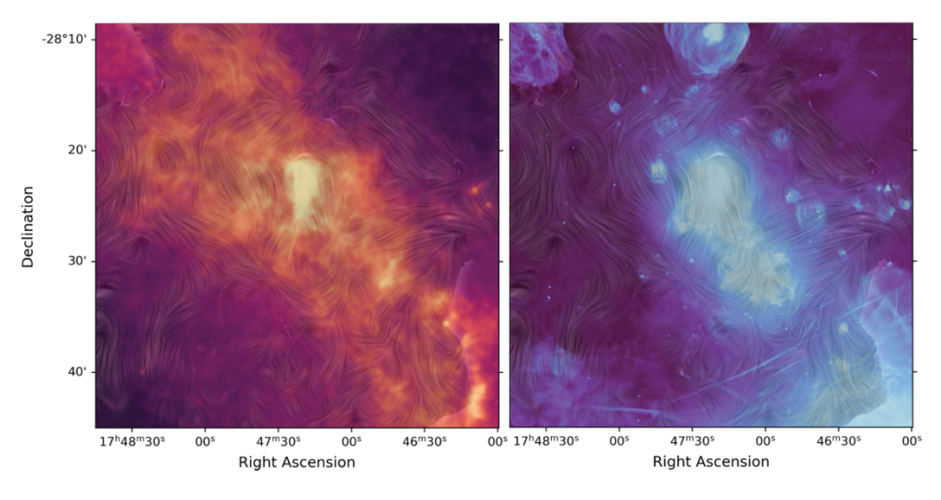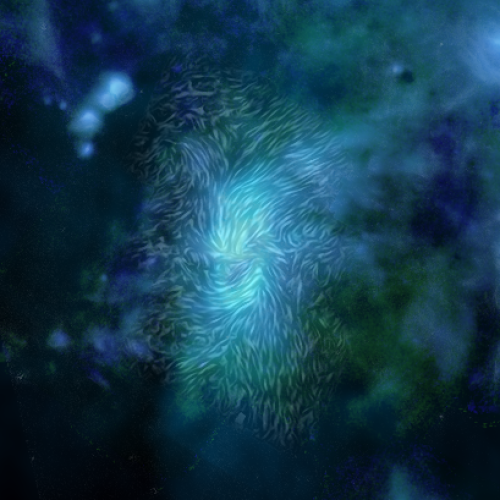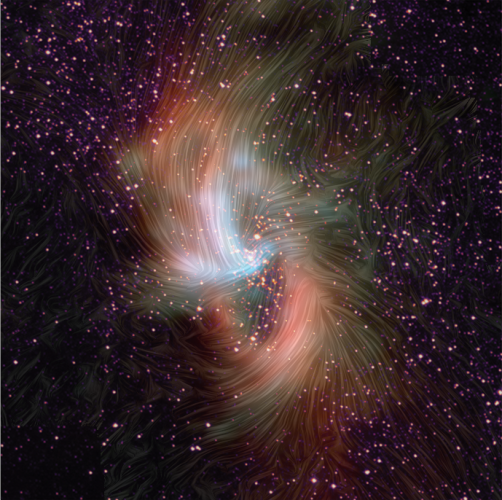Science Results: Galactic Center
| Spotlight | Image |
|---|---|
|
Magnetically-Structured Accretion in the Galactic Center’s Circumnuclear Disk
by Jordan Guerra and Joan Schmelz
Paper:
The Strength of the Sheared Magnetic Field in the Circum-Nuclear Disk
|

|
|
The SOFIA/FORCAST Galactic Center Legacy Program
by Matthew Hankins |

|
|
The Galactic Center Magnetosphere
by Natalie Butterfield |

|
|
The Role of the Magnetic Field in the Galactic Center
By Joan Schmelz (USRA) |

|
|
Signatures of Star Formation in the Galactic Center
By Matthew Hankins
SOFIA’s first completed legacy program provides researchers with a vastly improved view of warm dust in the center of the Galaxy, revealing signatures of star formation in exquisite detail. |

|
|
Magnetic Field May Be Keeping Milky Way’s Black Hole Quiet
By Kassandra Bell and Joan Schmelz Supermassive black holes exist at the center of most galaxies, and our Milky Way is no exception. But many other galaxies have highly active black holes, meaning a lot of material is falling into them, emitting high-energy radiation in this “feeding” process. The Milky Way’s central black hole, on the other hand, is relatively quiet. New observations from NASA’s Stratospheric Observatory for Infrared Astronomy, SOFIA, are helping scientists understand the differences between active and quiet black holes. |

|